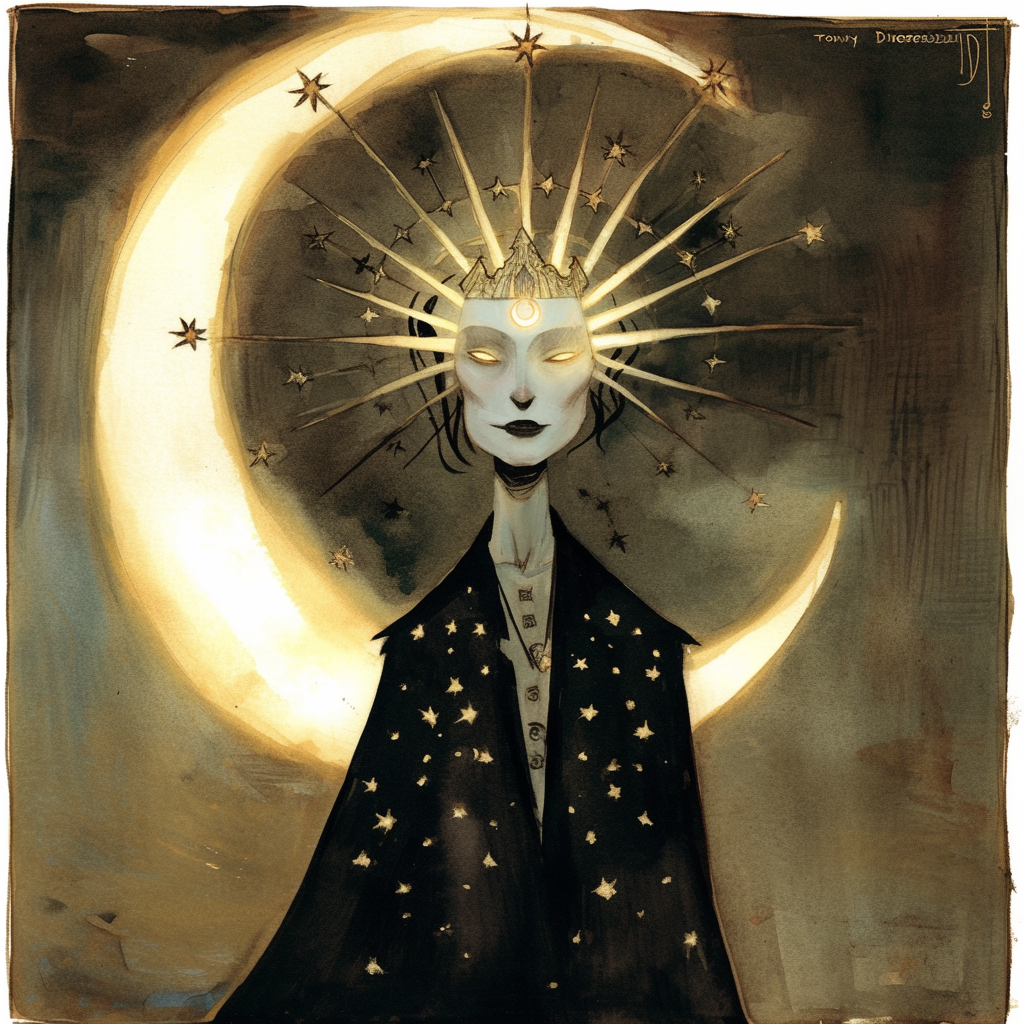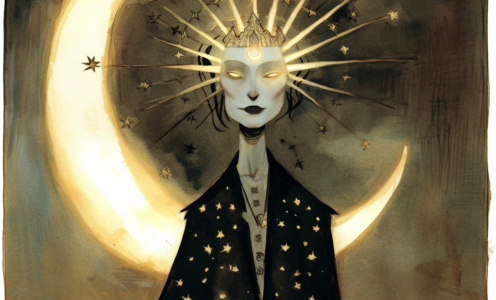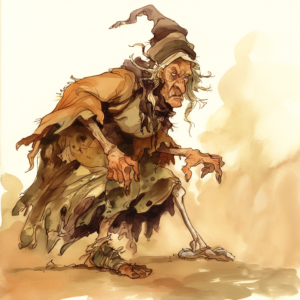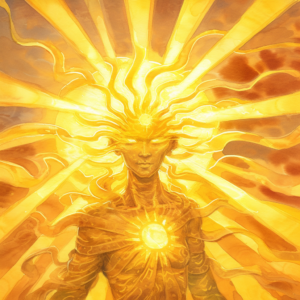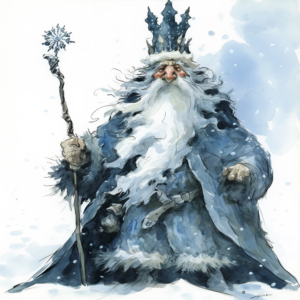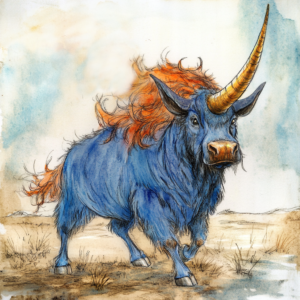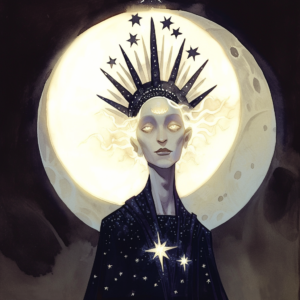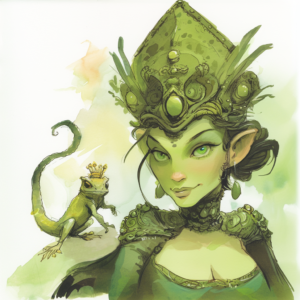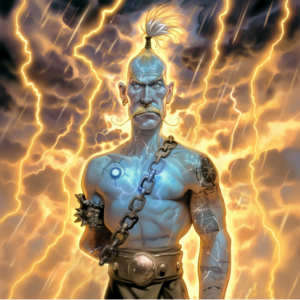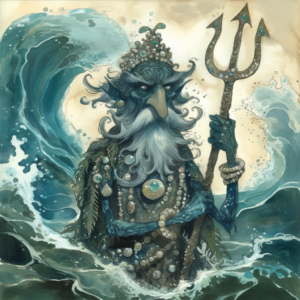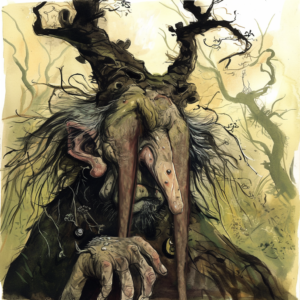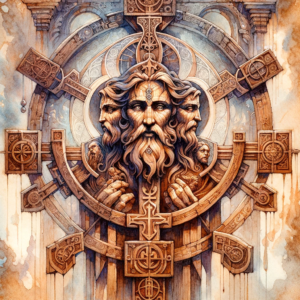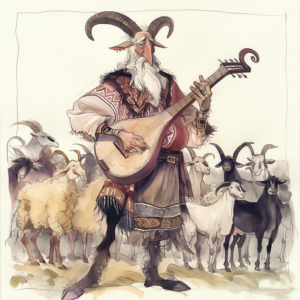An Introduction to the Slavic Pantheon
By Gunnery Scribe Averius Kort, Fraternity of Order
In the pursuit of cataloguing the many divine pantheons of the multiverse, one often encounters challenges of obfuscation, misinterpretation, and outright misinformation. Few examples highlight these difficulties better than the Slavic pantheon. This collection of powers, worshipped on multiple Prime worlds, is a tangled web of myths, shifting truths, and fragmented folklore. As a researcher from the Fraternity of Order’s Religious History Integrity unit, I have made it my task to unearth the kernels of truth within the chaos, though even I must admit the work has been bedevilled by meddlesome agents and the passage of ages.
The Slavic gods, much like their Nordic or Greek counterparts, govern domains that encompass nature, war, and community. They hold sway over elements of weather and the movements of celestial bodies, alongside more intangible ideals such as love, labour, and prophecy. Notably, they lack a rigid hierarchy or any recognised overpower, which sets them apart from many more centralised pantheons. This peculiarity has led some to theorise that their influence wanes, their essence slowly seeping into the Astral Plane to join the ranks of forgotten powers. Others suggest their hierarchy has been deliberately veiled, with the greater powers choosing to remain hidden—a tantalising enigma for the scholarly mind.
Their history is marked by persistent conflict, particularly with their long-standing foes: the Zmeys, a cabal of evil dragons. Yet, the pantheon is also defined by cooperative ties, especially with other lawful powers like those of the Norse pantheon. Their realms, scattered across the Upper Planes, and more unusually the Inner Planes, exhibit a harmony of nature and civilisation, with realms like Perun’s Sparkling Weald and Khors’ lunar sanctuary offering glimpses into their characters.
Compared with some of the ancient pantheons, the Slavis powers are relative newcomers to the planes. It’s a cert that Perun’s got his work cut out to bring the bickering deities together into a more coherent group. This hasn’t been made any easier by the meddling actions of a certain anti-religious faction of the Cage…
The Athar’s Campaign of Misinformation
Athar nonsensemongers have left an indelible mark on the study of the Slavic pantheon. Around a century ago, these self-proclaimed defiers of divinity launched a campaign to discredit the pantheon entirely. Libraries in Sigil were purged of legitimate accounts, replaced by forgeries espousing the gods as mere mortal pretenders or avatars of other powers. The Athar’s work did not end there—they spread their falsehoods across Prime worlds, ensuring the misinformation seeped into local folklore. The result has been a maddening labyrinth of competing narratives, making it nearly impossible to ascertain original truths. Frustratingly, the powers themselves seem not to care enough to set records straight, perhaps benefitting from a more diverse set of followers? I cannot fathom why else they would allow their mythology to be muddied so.
Even the Athar themselves have struggled with the aftermath. Their grand experiment in deception may have proven the malleability of belief, but it has also undermined their own ability to study the pantheon objectively. For scholars like myself, this poses an ongoing frustration: every scripture, every tale must be scrutinised with the scepticism of a rogue weighing a marked deck of cards.
Key Myths and Figures
Despite the chaos in the lore, several myths and deities stand out as particularly significant:
Perun, the Lightning Tsar: A warlike power who despises cowardice and treachery. His left hand is said to conceal unimaginable power, perhaps tied to a future cataclysm foretold in fragmentary prophecies. His hatred for dragons is legendary, as is his connection to the Wells of Strength—sources of miraculous vitality on his stormy realm in the Plane of Lightning.
Dazhbog, the Red Sun: A radiant, androgynous power of rulership and prophecy. They are revered for their wisdom and their association with the cycle of spring, which they coax into being with their golden light. Dazhbog’s origins, potentially “forged” by Svarog, hint at a mysterious interdependence within the pantheon.
Khors, the Crescent Moon: The protector of dreams and travellers, Khors is an enigmatic deity shrouded in melancholy. Their unspoken affection for Dazhbog fuels many a myth, though some suggest this connection is tainted by their shared origins in Svarog’s craft. Khors’ realm, perched atop the Birch of Life, embodies a tranquil beauty that draws visitors seeking solace under its moonlit canopy.
Svarog, the Heavenly Smith: A power of craftsmanship and community, Svarog serves as the pantheon’s patriarch in all but name. His union with Mokosh, a power of fate and the earth, is seen as the divine representation of harmony within the family.
In crafting this account, I have relied on every scrap of folklore, scripture, and planar account I could gather. The appendix to this work outlines these sources, each annotated with my thoughts on their reliability. Context, as always, is paramount. While the pantheon may lack the grandeur of the Olympians or the tightly woven structure of the Archons, its unique and quiet resilience deserves recognition.
For those who seek to engage with the Slavic gods, take heed: approach with curiosity but temper it with caution. Their myths may be fractured, their hierarchy unclear, but their realms and followers offer both challenges and rewards for the daring planewalker. In the multiverse, even the faintest whisper of belief can shape the cosmos—and with powers like Perun and Svarog, one would do well to listen closely to the thunder before it strikes.
Powers of the Pantheon
- Baba Yaga Yagishna (power of the dead, roads and magic); Dead‡
- Dazhbog (power of sun, light, spring, prophecy and rulership)‡
- Ded Moroz (archomental of winter, joy, generosity and renovation)‡
- Indrik (animal lord of prehistoric beasts, rhinoceroses)‡
- Khors (power of moon, dreams, compassion and prophecy)‡
- Marena (power of cold, beauty and death)‡
- Mistress of the Copper Mountain (archomental of precious minerals, miners, metalworkers and stonecutters)‡
- Mokosh (power of fertility, love, crafts, healing and farming)‡
- Perun (power of lightning, thunder, clouds, rain, war and strength); Pantheon Leader‡
- Sea Tsar (power of seas, sailors, and wealth)‡
- Stribog (power of wind and disease)‡
- Svantovit (power of soothsayers, divination, strength, war)‡
- Svarog (power of crafts, labour, community and love)‡
- Troyan (tanar’ri lord of conspiracy, pseudohistory, false secrets and xenophobia)‡
- Veles (power of domestication, trickery, music, shepherds, gold and magic)‡
Yours Faithfully, Gunnery Scribe Averius Kort
See also:
- Slavic Bestiary — a menagerie of mythological monsters
- Slavic Deep Dive — into the less well-known aspects of the pantheon
- Zmeys — a secret Slavic society of dangerously deranged dragons
The Powers of the Slavs
Sources:
- Sources: Margarita and Jon Winter-Holt. ‡ Denotes a homebrew addition to the lore. Margarita notes: While this adaptation is heavily based on Slavic folklore and beliefs, I must warn you. The amount of actual information we have on pre-Christian Slavic deities is so minuscule that building any kind of lore out of it is impossible. However, there’s a lot of folk beliefs about things these deities are thought to represent. So, basically, what I want to say is — context is important, and to find context refer to the appendix where I wrote down every folkloric reference, explained my thought process and elaborated on some possible controversial choices.

